
|

by Katherine Liberovskaya
INTRODUCTION

In the emerging international Internet art and culture scene, Russia seems to seldom be present or even mentioned. Apart from artists Alexei Shulgin and Olia Lialina, who have albeit produced some of the most interesting and influential net-art work ever, little is known in the Western Net and Media Art community about the situation and context of net.art in Russia - still the largest country in the world by area, even after the collapse of the Soviet Union, and sixth demographically. However, though as of yet only an estimated 13 to 20% of Russia's 146 000 000 population has computers and only some 8% has any kind of access to the Internet, behind a, for many Westerners limiting, "curtain" of Cyrillic text and/or Russian language (many Russians communicate in transliteration: in Russian using the Latin alphabet), thrives a whole booming environment of artistic net practice and net culture especially in the country's two main centers, Moscow and St.-Petersburg. This environment revolves around a series of people, places and tendencies constituting a chronology of creative engagement with the Internet since the mid-1990's. Having witnessed first-hand or gathered information on some of the moments of this chronology during frequent Media Art related visits to Russia over the nineties, I will here try to present this environment in a brief overview of the Russian situation, re-constructed according to the knowledge available to me. Because my intention is to provide an introduction to this universe, I have opted to paint as broad a general picture as possible thus often merely mentioning in passing many important protagonists and/or issues which would deserve more attention in a more comprehensive survey.
ORIGINS

The first Russian net art project is considered to be ROMAN, meaning novel in Russian and the first name of instigator Roman Leibov - aphilologist, disciple of famous Russian-language semiotician Yurij Lotman -ironically physically based outside of the country, in ex-Soviet Estonia, at the renowned Literature Department of Tartu University. The project, an interactive collaborative hypertext novel (in Russian using the Latin alphabet) where anyone could develop a link from the author's proposed initial first sentence launched in the mid-nineties, is still on-line and working today . ROMAN was the first of a since continuing tradition, that evolved out of the plain text environment of the Usenet of the eighties within Russian-language literary and semiotic circles, exploring the interactive collaborative possibilities of network-based hypertext through different forms of cyber-prose and cyber-poetry inspired by various forms of writing such as haïku, tanka, diverse word games, etc. It represents a most important tendency in Russian Internet culture of purely literary projects, usually entirely in Russian, geared towards and sustained by a vast ever-growing network of Russian-language literary servers, virtual circles and clubs, use-groups, events and contests, that are not only local but also physically based all over the world - in the U.S., Australia, Israel, Europe, etc. - forming what is referred to as the world-wide "Russian Internet".
TENDENCIES

Indeed, according to Ivan Zassurski, research associate at the Department of Journalism at Moscow State University and author of the book"Mass Media of the Second Republic" (1999), there are two main cultural activity tendencies on the Internet in Russia: one is based on text and language preoccupations, always significant because the Russian culture in general is very literary, he says, the other is essentially visual or conceptual and connected to the world of contemporary art. A third recent emerging tendency, for Zassurski, would be represented by a growing net-activism scene.
On the visual side, net-art mostly evolved in the margins of the"mainstream" Russian contemporary art scene, primarily in Moscow and St-Petersburg. In Moscow, net-art came out of the climate of an emerging video and media art culture gravitating in 1993-94 around the newly opened Art Laboratory of New Media of the Soros Center of Contemporary Art and out of a spirit of opposition to then recently established and already institutionalized contemporary art practices. 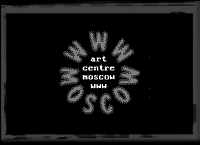 According to Moscow new media curator Tatyana Moguilevskaya, at the time the Internet especially attracted artists interested in collective forms of creation and copyright.Thus, many early net projects were alternative art presentation spaces -net-galleries, like the Moscow WWW-Art Center, net-museums, net-centers, net-zines - projects in which participated, among others, artists Tanya Detkina,Vladimir Moguilevsky, Alexander Nicolaev, Vadim Koshkin and Alexei Shulgin (see, for example). According to Moscow new media curator Tatyana Moguilevskaya, at the time the Internet especially attracted artists interested in collective forms of creation and copyright.Thus, many early net projects were alternative art presentation spaces -net-galleries, like the Moscow WWW-Art Center, net-museums, net-centers, net-zines - projects in which participated, among others, artists Tanya Detkina,Vladimir Moguilevsky, Alexander Nicolaev, Vadim Koshkin and Alexei Shulgin (see, for example).
ALEXEI SHULGIN AND OLIA LIALINA

Shulgin, for his part, started on his own, also outside and against the contemporary art institutions and what many artists call the "mafia" of Moscow curators which he was weary of as a young photo artist, in 1994, with the help of free access to the Internet provided by a friend working in the corporate world. He was perhaps first to become known as a "net.artist" in Russia because of the purely net-specific nature of his work which did not seek to transpose other forms or spaces of expression to the Internet as did many early projects (he claims to have invented form art, many of his projects are at his site. He was soon followed in this direction by Olia Lialina, whom he considers as his pupil, and her, by now well-known, net films and net stories  (Teleportacia , My Boyfriend Came Back from the War, Will-n-testament). Lialina, then an experimental film critic and theorist had come to the Internet through her development of a web site for the alternative film collective Cine Fantom with which she was involved at the time. To many Russians Shulgin's and Lialina's reputations owe much to their use of the English language for their net projects, seen as a deliberate movement towards the international scene. For Shulgin and Lialina, however, English, the "official" language of the Internet, represents one of its essential dimensions, a specificity, a basic reality to shape and transform, much like a physical material or a color in other art forms, and necessary to incorporate in order to truly engage with the Network of Networks. (Teleportacia , My Boyfriend Came Back from the War, Will-n-testament). Lialina, then an experimental film critic and theorist had come to the Internet through her development of a web site for the alternative film collective Cine Fantom with which she was involved at the time. To many Russians Shulgin's and Lialina's reputations owe much to their use of the English language for their net projects, seen as a deliberate movement towards the international scene. For Shulgin and Lialina, however, English, the "official" language of the Internet, represents one of its essential dimensions, a specificity, a basic reality to shape and transform, much like a physical material or a color in other art forms, and necessary to incorporate in order to truly engage with the Network of Networks.
DA-DA-NET

 In 1997 "Da-Da-Net ", a festival of Russian Internet art resources and culture, was created by the Media Art Lab of the Moscow Soros Center of Contemporary Art run by Olga Shishko and Alexey Isaev with the help of the Open Society Institute. The first edition of the festival, organized with the collaboration of Tatyana Moguilevskaya, was especially meant to locate any other Russian-language web-artists aside from the ones already known and to measure the extent of the Russian Internet. It has since developed into a successful yearly international event with international artists and an international jury. In fact in 1999, to answer an already felt need of a less institutionalized exhibition context, Isaev and Shishko launched a second International Internet festival, "Trash-art", running parallel to "Da-Da-Net" but much more marginal. The more official "Da-Da-Net" has not however been discontinued because of its importance in promoting the acceptance of net-art and net-culture in the reluctant climate of the established Russian contemporary art world. Both festivals are significant for the continuation and evolution of a certain net-art community and culture not only in Moscow but across Russia in general. In addition to encouraging networking between different net-art related individuals and organizations, they also reveal new local talent and initiatives, as for example 1998 and 1999 festival prize-winners Moscow couple Andrej et Julia Velikanov who have created the virtual artist Namniyas Ashuratova . In 1997 "Da-Da-Net ", a festival of Russian Internet art resources and culture, was created by the Media Art Lab of the Moscow Soros Center of Contemporary Art run by Olga Shishko and Alexey Isaev with the help of the Open Society Institute. The first edition of the festival, organized with the collaboration of Tatyana Moguilevskaya, was especially meant to locate any other Russian-language web-artists aside from the ones already known and to measure the extent of the Russian Internet. It has since developed into a successful yearly international event with international artists and an international jury. In fact in 1999, to answer an already felt need of a less institutionalized exhibition context, Isaev and Shishko launched a second International Internet festival, "Trash-art", running parallel to "Da-Da-Net" but much more marginal. The more official "Da-Da-Net" has not however been discontinued because of its importance in promoting the acceptance of net-art and net-culture in the reluctant climate of the established Russian contemporary art world. Both festivals are significant for the continuation and evolution of a certain net-art community and culture not only in Moscow but across Russia in general. In addition to encouraging networking between different net-art related individuals and organizations, they also reveal new local talent and initiatives, as for example 1998 and 1999 festival prize-winners Moscow couple Andrej et Julia Velikanov who have created the virtual artist Namniyas Ashuratova .
TECHNO ART CENTER

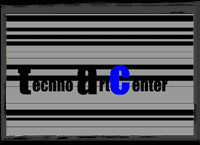 In St-Petersburg net-art and net culture emerged in the alternative art world. In the mid-nineties, the alternative art Gallery 21, opened a section dedicated to Media Art, the TechnoArtCenter, hosting the city's first computer dedicated to artists' access and artistic events. There took place the first experiments in interactive net-communication, first with Helsinki, then London. These experiments inspired St-Petersburg media artists and theorists to form their own virtual community in interaction with the international virtual community of media art. Among the first todevelop net projects were Kostya MiTenev, Alla Mitrofanova and the RiverBoys collective, whose sites were hosted by the server of Helsinki's MUUGallery. Soon, however, a local server, DUX, became available to the St-Petersburg art-world. The DUX server hosted the first Net Cafe, Tetris, and made possible a whole series of net projects and communications, as for example a number of international on-line conferences and the first Internet party, "The Great Clone Party". In St-Petersburg net-art and net culture emerged in the alternative art world. In the mid-nineties, the alternative art Gallery 21, opened a section dedicated to Media Art, the TechnoArtCenter, hosting the city's first computer dedicated to artists' access and artistic events. There took place the first experiments in interactive net-communication, first with Helsinki, then London. These experiments inspired St-Petersburg media artists and theorists to form their own virtual community in interaction with the international virtual community of media art. Among the first todevelop net projects were Kostya MiTenev, Alla Mitrofanova and the RiverBoys collective, whose sites were hosted by the server of Helsinki's MUUGallery. Soon, however, a local server, DUX, became available to the St-Petersburg art-world. The DUX server hosted the first Net Cafe, Tetris, and made possible a whole series of net projects and communications, as for example a number of international on-line conferences and the first Internet party, "The Great Clone Party".
CYBERFEMIN CLUB

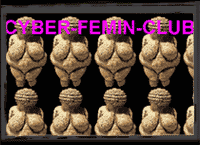 In the mean time, Irina Aktuganova and Alla Mitrofanova, constituted a separate feminist branch of net and media activity out of the TechnoArtCenter, the CyberFeminClub. In addition to training women in basic computer and Internet skills, providing Net access to women and artists and presenting various forms of media art, the CyberFeminClub organized and hosted the first international cyberfeminism conference in Russia in 1998. The CyberFeminClub is an important center for Internet activity in Russia because according to theorist Mitrofanova the Russian Internet - that is not organized or structured like a social space - is very feminine in comparison to the Russian Art World that still remains very masculine. The Internet, says Mitrofanova, changes the hierarchy of society -art society and encourages more intuitive feminine models, new models seeking ways to get straight to the point as women are not interested in re-building traditional-style institutions but rather different active platforms with different interfaces: social, aesthetic, ideological. Many alternative St-Petersburg communities where women play an important role thus gravitate around the CyberFeminClub. Most interesting is in my view their Cyber Mother project conceived as a cyber-interface for a growing number of local women artists and theorists stuck at home with new-born or small children.
In the mean time, Irina Aktuganova and Alla Mitrofanova, constituted a separate feminist branch of net and media activity out of the TechnoArtCenter, the CyberFeminClub. In addition to training women in basic computer and Internet skills, providing Net access to women and artists and presenting various forms of media art, the CyberFeminClub organized and hosted the first international cyberfeminism conference in Russia in 1998. The CyberFeminClub is an important center for Internet activity in Russia because according to theorist Mitrofanova the Russian Internet - that is not organized or structured like a social space - is very feminine in comparison to the Russian Art World that still remains very masculine. The Internet, says Mitrofanova, changes the hierarchy of society -art society and encourages more intuitive feminine models, new models seeking ways to get straight to the point as women are not interested in re-building traditional-style institutions but rather different active platforms with different interfaces: social, aesthetic, ideological. Many alternative St-Petersburg communities where women play an important role thus gravitate around the CyberFeminClub. Most interesting is in my view their Cyber Mother project conceived as a cyber-interface for a growing number of local women artists and theorists stuck at home with new-born or small children.
BIONET

Concurrently, ex-video and film artist Kostya MiTenev - who says he became a net-artist because his apartment was broken into and all his tapes with his films and video art were stolen - created his own on-line gallery, Gallery BIONET, where in addition to his personal "hypertext films" he exhibits the net-art work of other local and/or international artists. Much like Shulgin and most artists working on the Internet I spoke with, MiTenev considers that the Internet has offered him the possibility of autonomous self-expression and has enabled him to be independent of the curatorial world, compared to his previous experiences with video and film.
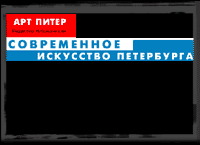 All of the St-Petersburg Internet art initiatives, come together in cyberspace on the Contemporary Art of St-Petersburg server. This unique server run by curator and art critic Nikolai Kononihin, features links to nearly all of the city's contemporary and alternative art and culture organizations, collectives, institutions, spaces and individuals as well as hosting publications and projects such as the documentary "Internet Museum of St-Petersburg Contemporary Art". All of the St-Petersburg Internet art initiatives, come together in cyberspace on the Contemporary Art of St-Petersburg server. This unique server run by curator and art critic Nikolai Kononihin, features links to nearly all of the city's contemporary and alternative art and culture organizations, collectives, institutions, spaces and individuals as well as hosting publications and projects such as the documentary "Internet Museum of St-Petersburg Contemporary Art".
Recently, the St-Petersburg Soros Center of Contemporary Art has evolved into a new institution, the Petersburg Foundation for Culture and the Arts "Pro Arte Institute" , which opened its doors in early 2000. Situated within the walls of the historical Peter and Paul Fortress, the institute administers grant competitions, runs lecture series and seminars and a distance learning course in contemporary art, as well as a technical education program for young people in Media Art at its state of the art multimedia laboratory where teaches, among others, Alexei Shulgin. This new center promises to become an important site for the development of net culture and net-art in Russia in the future.
SERGEY TETERIN

 While Moscow and St-Petersburg offer an increasing variety of contexts, structures and even institutions for the development of net-art, such is not the case for the rest of Russia. Sergey Teterin, the only media and net-artist in the remote provincial town of Perm, explains that in the provinces media artists' activity is completely virtual because Media Art is not yet accepted by local art organizations and institutions. For him, the Internet is particularly important inasmuch as it provides isolated provincial artists with the means to keep up with and participate in the media art communities of the big centers (Moscow and St-Petersburg) much more so than to connect with the rest of the world. Often then primarily targeting the centers and the Russian Internet, much net-art work from the provinces, including his own, is entirely in Russian, says Teterin. Thus, while the Net appears to represent an idea of freedom and independence for Moscow and St-Petersburg artists, it is on the contrary one of cohesion and community that it seems to inspire in provincial artists. While Moscow and St-Petersburg offer an increasing variety of contexts, structures and even institutions for the development of net-art, such is not the case for the rest of Russia. Sergey Teterin, the only media and net-artist in the remote provincial town of Perm, explains that in the provinces media artists' activity is completely virtual because Media Art is not yet accepted by local art organizations and institutions. For him, the Internet is particularly important inasmuch as it provides isolated provincial artists with the means to keep up with and participate in the media art communities of the big centers (Moscow and St-Petersburg) much more so than to connect with the rest of the world. Often then primarily targeting the centers and the Russian Internet, much net-art work from the provinces, including his own, is entirely in Russian, says Teterin. Thus, while the Net appears to represent an idea of freedom and independence for Moscow and St-Petersburg artists, it is on the contrary one of cohesion and community that it seems to inspire in provincial artists.
MAILRADEK

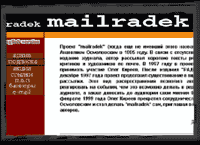 In a quite different spirit of community and cohesion, during the 1999-2000 Russian elections, emerged a new direction of cultural Internet activity: net-based activism. Different newly formed and established critical groups with different radical strategies in relation to the political situation embraced cyberspace as a new field of action. Thus, for example, the Soyuz 2000 movement, of which Ivan Zassurski is a key figure, created a web site to incite visitors to boycott the elections, in complement to its public street performances. As well, anarchist Oleg Kireyev's Mailradek website- that had been publishing anarchist and radical opinions on the Net since the mid-nineties - played an active on-line role during the period. In a quite different spirit of community and cohesion, during the 1999-2000 Russian elections, emerged a new direction of cultural Internet activity: net-based activism. Different newly formed and established critical groups with different radical strategies in relation to the political situation embraced cyberspace as a new field of action. Thus, for example, the Soyuz 2000 movement, of which Ivan Zassurski is a key figure, created a web site to incite visitors to boycott the elections, in complement to its public street performances. As well, anarchist Oleg Kireyev's Mailradek website- that had been publishing anarchist and radical opinions on the Net since the mid-nineties - played an active on-line role during the period.
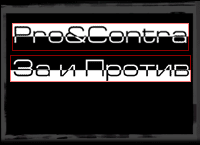 "Mailradek" is one among a considerably large number of alternative publications and servers in Moscow and St-Petersburg, the description of which would be beyond the scope of this article, that contribute to the lively Internet culture in Russia. Their range and scope could recently be measured at a major international cross-disciplinary symposium "PRO@CONTRA MACHINEMACHY: MEDIA TECHNOLOGY / ART / MEDIA MENTALITY", in Moscow, organized in spring 2000 by Isayev and Shishko and their now independent Media Art Lab. "Mailradek" is one among a considerably large number of alternative publications and servers in Moscow and St-Petersburg, the description of which would be beyond the scope of this article, that contribute to the lively Internet culture in Russia. Their range and scope could recently be measured at a major international cross-disciplinary symposium "PRO@CONTRA MACHINEMACHY: MEDIA TECHNOLOGY / ART / MEDIA MENTALITY", in Moscow, organized in spring 2000 by Isayev and Shishko and their now independent Media Art Lab.
PRO&CONTRA

"PRO@CONTRA - MACHINEMACHY", a large part of which was dedicated to net-art, net-culture and net community, brought together for the first time most of the Internet-related individuals, groups and institutions, including two Internet Academies, from accross Russia and ex-USSR with a significant number of international artists and theorists of which I was fortunate to be a part. Scheduled just before the State Duma's hearings on Internet regulation, at the same time as it exposed the extent and myriad facets of the larger Russian Internet community, it fostered interaction and important exchanges between the multiple actors and various areas of net activity which keep increasing with the move to cyberspace by ever more off-line cultural organizations, because of economic reasons since the 1998 crisis. While for some the conference has been a unique opportunity to network with and learn from the international Internet community, for others, like Sergey Teterin, it has been instrumental in revealing the specificities of Russian net-art. According to Teterin, net-art in Russia, more so than elsewhere, is connected to avant-garde traditions. And, over the course of the conference, what stood out is that in Russia technology is less important than the content or concept, he says, and the content or concept is often connected to stories.
CONCLUSION

Stories and forms of storytelling take me back full circle to Russian Internet culture's literary beginnings and to the end of my very brief and general overview of its tendencies and contexts. I hope that this overview has succeeded in providing an introducticon to this vast complex thriving universe, some idea of its origins, life and logic, as well as in supplying sufficient information and links for further investigation of Internet art and culture in Russia. Indeed, more than any kind of comprehensive survey, my intention was here to outline a sort of map which would somehow situate these artistic and cultural initiatives within the global Network of Networks and serve as a starting point for the navigation of the little-known mysterious territory behind the language barriers of the Russian Internet.
REFERENCES

Conversations with Alexei Shulgin, Olia Lialina, Alla Mitrofanova, Kostya MiTenev, Nicolai Kononikhin, Sergey Teterin and Ivan Zassursky at the"PRO@CONTRA - MACHINEMACHY: MEDIA TECHNOLOGY / ART / MEDIA MENTALITY" international symposium , 10-14 May 2000.
"RUNET: NetCulture in Russia: Interview with Olia Lialina" by Florian Schneider and James Allan, 21.02.2000
"Art in the internet. Dynamics in Russia" par Tatyana Moguilevskaya
Katherine Liberovskaya
Katherine Liberovskaya is a Montreal-born professional multidisciplinary
artist who has been working predominantly in experimental video and
multimedia since the late eighties. Over the years, she has produced
numerous single-channel videos and several installations among which: "A
SCRATCH Y2K HUSH-SONG" (1999), "RUSSIAN SOUL-SEARCHING" (1997), "EPHEMERIS"
(1996), "XXII" (1993), "LE BRUISSEMENT DES LANGUES" (1993), "SUPERMARKET
STRATEGY: A SHOWCASE STORY" (1990), "GLISSEMENT DANS UN VIRAGE COMPLET"
(1988), "HAPPINESS: A VIRTUAL SKETCH" (1989) as well as "FROZEN INK"
(1989), a work that has won several awards and mentions in Europe and North
America. Her works have been presented at various artistic events around
the world and are included in the video art collections of The National Art
Gallery of Canada and The Art Bank of The Canada Council as well as in
several private collections. Since obtaining her diploma in "Composite
Image" in 1990 from the Atelier d'Image Composite de l'École des Beaux-Arts
de Poitiers in France, she has held over a dozen grants and arts awards in
Canada and in France. She currently lives and works in Montreal where, in
addition to her artistic practice, she teaches television production at the
Communications Department of Concordia University and is pursuing doctoral
studies at McGill University. Her academic research is focused on the
implications of the "New Media" for artistic practice. Moreover, she is
involved in the programming and organization of new media events, notably
with Studio XX, a resource and presentation center dedicated to women and
new media, where she has been active since its beginnings in 1995.
|



